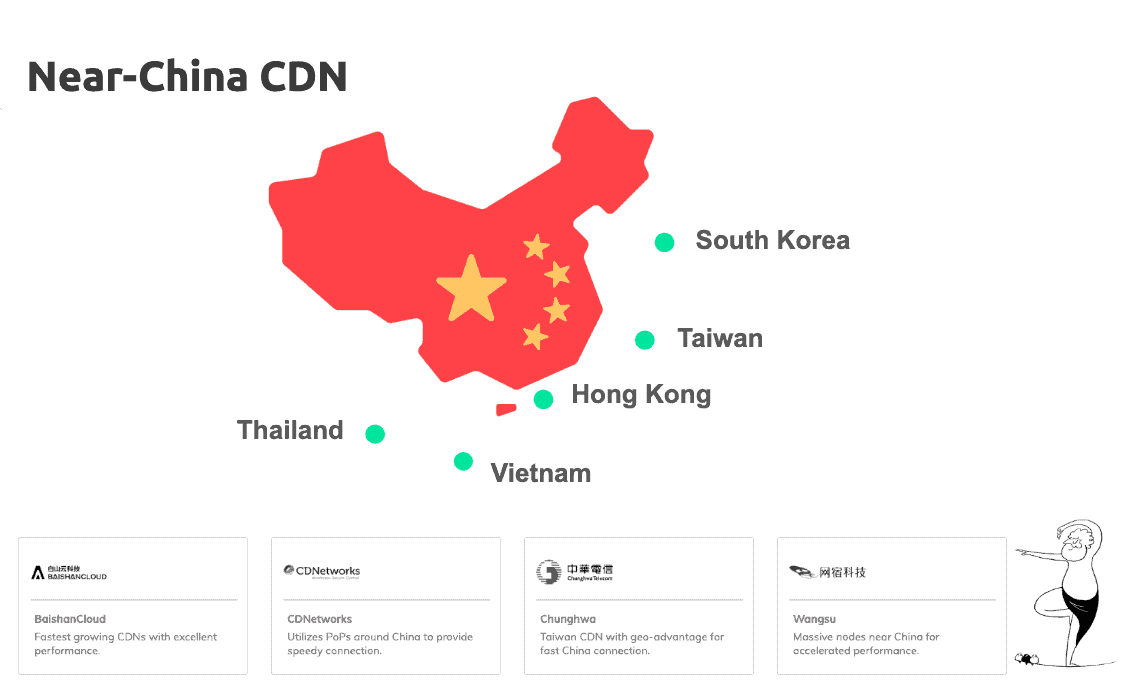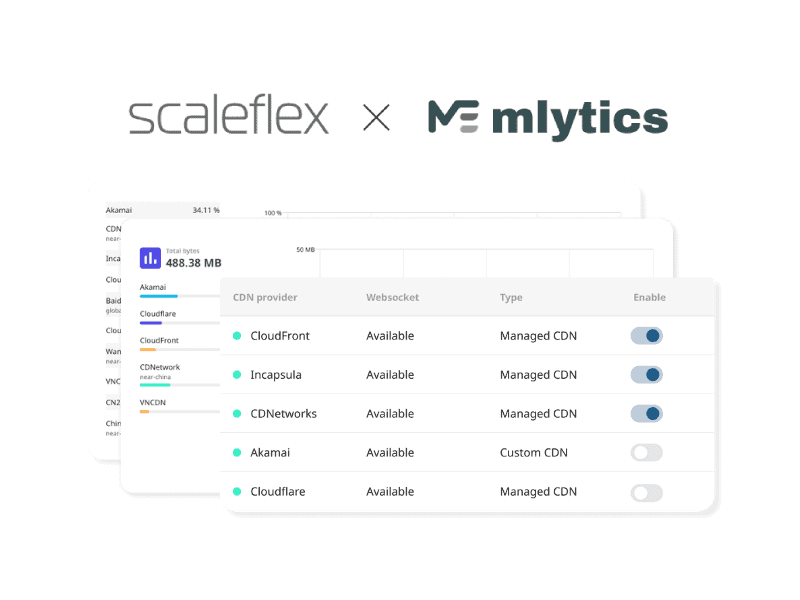The Chinese e-commerce market has grown by incredible leaps to become a trillion-dollar industry. As of 2019, e-commerce proceeds totaled a whopping $1.94 trillion. This industry is expected to bring in around $1.56 billion by 2024.
In this guide, we explore the major obstacles non-Chinese websites face within the Chinese e-commerce industry and China to penetrate the thriving Chinese e-commerce markets in 2021 and beyond.
Challenges facing cross-border content delivery into China
Chinese online shoppers often complain about the slow load times of foreign e-commerce sites.
Typically, you’d expect the website you visit to take at least 2 seconds, at most, to load completely.
However, that’s never the case with non-Chinese websites. Usually non-Chinese websites take 5 seconds or longer to load, with complaining users as a consequence. These delays in loading times have to do with the complex Chinese Internet ecosystem.
The complex Chinese internet ecosystem presents challenges for foreign websites, causing slow load times. Let’s explore some contributing factors.
- Limited Connectivity
- Great Firewall of China
- Expensive Licensing
Limited connectivity
China has 4 top Internet Service Providers who cover about 95% of the area. Connections that need to pass from one ISP to another are required to go through an Internet Exchange Point (IXP).
In China, there is only a limited amount of IXP’s, and the ones available can be very congested. This causes a very poor interconnection between local ISP’s. Therefore, data traveling across the country can be incredibly slow, and in some cases may never even reach its destination. Using Content Delivery Networks (CDNs) with servers located in China can significantly reduce load times by caching and delivering content locally. In this regard, Mlytics can help you deliver content with CDN.

Great Firewall of China
The Great Firewall of China (GFW) is a combination of legislative actions and technologies to regulate the internet within China’s borders. What it mainly boils down to is blocked access to selected foreign websites and applications, and slowed-down cross-border internet traffic.
The main reasons why the GFW is causing slow loading times are
- Traffic entering and leaving China must go through a limited number of international gateways, adding layers of latency to user requests.
- That it uses Deep Packet Inspection to monitor the internet, which sometimes may cause packet loss, meaning that the requested data couldn’t make it to a user’s computer because data is lost.
This is then magnified due to the congestion issue mentioned prior. Now, the lost packet has to be retransmitted via the congested line, which results in a slow load time and bad user experience.
The GFW also blocks Google, Facebook, and Twitter which provide many essential libraries and apps for engineers that are widely adopted. For instance, Google Analytics is widely used by most websites globally. But since Google is being blocked in China, any website with Google Analytics installed will take longer to load.

The Great Firewall of China
Expensive licensing
The Chinese authorities require foreign websites to obtain an ICP (Internet Content Provider license) if they wish to host and display their website in China. Typically, websites without an ICP license won’t be accessible to Chinese users.
Securing an ICP license is often a daunting and protracted process. This license is also quite costly to obtain. In fact, not all those who apply to get the ICP license actually get it. The government has the full discretion to turn down the requests.

Online trends in China
Cross-border e-commerce is expected to surge
The number of Chinese consumers opting to buy goods and services online is expected to rise with time. In 2020, cross-border online sales surpassed $164 billion, nearly double compared to 2019.
Demand for live streaming and short videos to rise
The world is experiencing a paradigm shift from text-based content to videos. The Chinese have not been left behind in this data consumption shift. Today, an estimated 300 million short video apps have been installed in the nation. The compelling and deeply engaging live streams and videos keep the millions of Chinese consumers coming back for more.
Live streams help to foster the feeling that viewers are not being left out. The principle of FOMO, better known as the fear of missing out, allows live stream users to actively contribute to stories making headlines in their locales and nation as well. The live stream viewers get to send messages on breaking news. Some of these messages get responses in real-time, which has a profound impact on the viewers.
E-commerce sellers are using live-streamed shows to reel in shoppers by the droves. A perfect example was seen at the 2019 Singles Day Taobao shopping gala. Viya, one of the nation’s leading e-commerce sellers, attracted a whopping 43.15 live stream buyers during a virtual shopping extravaganza that lasted an entire 8 hours. Li Jiaqi, on the other hand, held a 6-hour virtual shopping marathon that drew in an estimated 37 million viewers.
The increasing popularity of live streaming and short videos in China is changing the way businesses interact with their target audiences. It is providing them with new opportunities to promote their products and services, engage with their customers, and create a sense of community around their brands. By leveraging live streaming and short videos, businesses can effectively reach out to their target audience and establish long-term relationships with them. Request Mlytics Demo now to manage your video streams best and deliver them to your users smoothly.

The rise of mobile shopping
Close to 96% of all Chinese shopping originates from Mobile users. To give your e-commerce website a sure edge against the millions of other competing domains, you must have a mobile-friendly site.
Research has shown that mobile-friendly websites rank higher and more favorably on China’s leading search engine, Baidu. Mobile responsive websites have better bounce rates and provide an excellent end-user experience.
Expanding e-commerce to lower-tier cities
In the past, most if not all, Chinese e-commerce merchants focused on the consumers in the big cities. The sellers targeted wealthy consumers in cities like Beijing, Shanghai, Guangzhou, and other major metropolises.
Nowadays, the previously lower-tier cities aren’t what they once used to be. Wealthy people have emerged in these lower-tier cities, presenting a fantastic opportunity for online sellers to mint a pretty penny.
To make it in the lucrative Chinese e-commerce niche, you must aim to create stellar short videos for your potential customers. To achieve that success, it’s in your best interests to partner up with an experienced and reputable CDN solution provider.

Best practices for content delivery into China
The most crucial step would be to implement a proper CDN solution to put content in front of your users.
In short, a CDN server caches your website content and loads your site faster based on the viewer’s geographical location.
There are two main scenarios you can go with for a solid China CDN solution :
Scenario 1 : Acquire an ICP license and leverage China CDN
You can speed up your site performance in China by using a China Content Delivery Network (CDN). China CDNs utilize local Points of Presence (PoP) to deliver your website to the local audience at a much faster speed than coming from outside the country.
When shopping for an ideal China CDN solution, it’s crucial to consider these two factors: the quantity of PoPs the CDN offers and the respective locations of the PoPs. For the best performance, you’ll need to ensure that the CDN provider has a PoP near the area you’re targeting in China. We covered the subject of choosing the right CDN provider for your China content delivery solution in this article.

Scenario 2 : Operate without an ICP license and make use of near-China CDN
As mentioned before, typically the Chinese authorities require you to go through numerous hoops before awarding you an ICP license. In the event that you’re unable to obtain an ICP license, don’t worry, there’s an alternative… You can leverage what we call ‘Near-China CDNs’ to get your website in front of Chinese web-users.
Near-China Content Delivery Networks (CDN) includes CDN providers that have Points of Presence (PoPs) located near, but not inside, the Chinese border. Because these CDNs do not lie within China’s boundaries, no ICP license is required to provide content to visitors in China.
Prime locations for Near-China CDN include South Korea, Taiwan, Hong Kong and other countries bordering China.
As you might expect, near-China content delivery solutions don’t deliver the exact same level of seamless content delivery services you’d find in a proper China CDN. However, the ease at which you can leverage the Near-China CDNs makes them a worthwhile investment. With a Near-China CDN solution, you’re guaranteed some level of visibility for your website in China even without the ICP license.

Takeaways
China is and will continue to be a lucrative e-commerce market. As a foreign entity, you’ll encounter a myriad of challenges before you reach the online buyers in China.
Foreign website-owners need to work their way around the imposing Great Firewall of China, may have to apply for an ICP license, and need to localize to meet the needs of Chinese web-visitors.
However, there are smart ways to find your way into the Chinese online landscape, one of which is to leverage a so-called ‘Near China CDN’ solution to get website visibility minus the ICP licenses by the Chinese governments.



